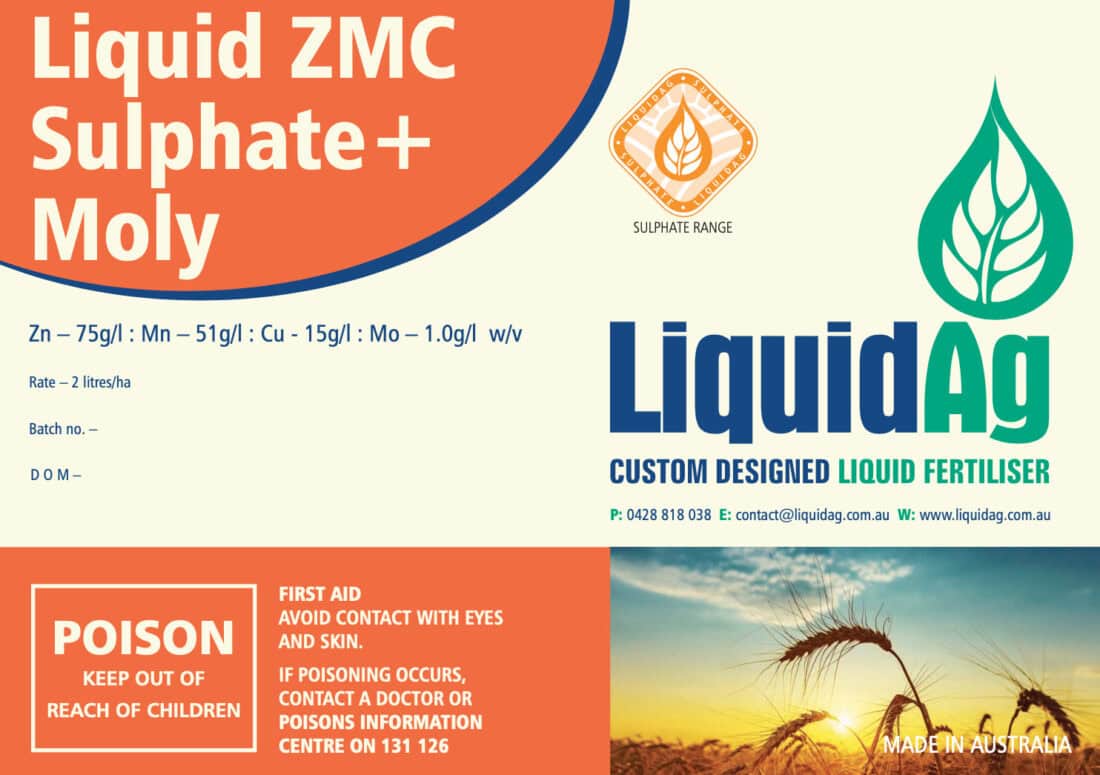Liquid ZMC + Moly

Directions For Use
Foliar Spray
Foliar sprays are the most effective way of applying Molybdenum however can be placed in furrow when seeding legumes.
| Foliar Spray | Rate (l/ha) | Water Rate (l/ha) | Comments |
|---|---|---|---|
| Cereals | 2-3 litres/ha | 70-100 litres/ha | Early to mid tillering |
| Canola | 2-3 litres/ha | 70-100 litres/ha | Important to verify deficiency by a plant nutrient test |
| Beans + Legumes | 2-3 litres/ha | 70-100 litres/ha | Adequate leaf area |
Deficiency Symptoms
Foliar sprays are the most effective way of applying Molybdenum however can be placed in furrow when seeding legumes.
- Stunted Pale plants (older leaves most effected, identical to Nitrogen deficiency)
- Leaf margins brown
- Inter-veinal chlorosis
- Legumes will usually show deficiencies symptoms first
